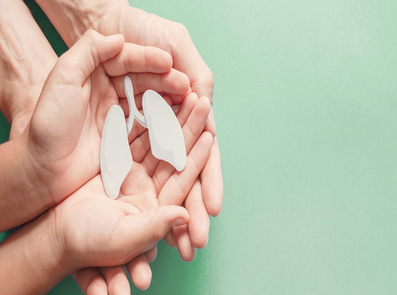TOBI Podhaler®
Prescribing Information

PRESCRIBING INFORMATION
TOBI® Podhaler® (tobramycin) 28 mg inhalation powder, hard capsules
Indication: Indicated for the suppressive therapy of chronic pulmonary infection due to Pseudomonas aeruginosa in adults and children aged 6 years and older with cystic fibrosis.
Presentation: Hard capsules for inhalation containing 28 mg of tobramycin.
Dosage and administration: The dose is the same for all patients within the approved age range, regardless of age or weight. The recommended dose is 112 mg tobramycin (4 x 28 mg capsules), administered twice daily for 28 days. TOBI Podhaler is taken in alternating cycles of 28 days on treatment followed by 28 days off treatment. The two doses (of 4 capsules each) should be inhaled as close as possible to 12 hours apart and not less than 6 hours apart. In case of missed dose with at least 6 hours until the next dose, the patient should take the dose as soon as possible. Otherwise, the patient should wait for the next dose. Treatment should be continued on a cyclical basis for as long as the patient is gaining clinical benefit from the treatment. If clinical deterioration of pulmonary status is evident, additional or alternative anti-pseudomonal therapy should be considered. There are insufficient data in elderly patients to support a recommendation for or against dose adjustment. Renal function is expected to affect the exposure to tobramycin. There are no data to support a recommendation for or against dose adjustment with TOBI Podhaler in patients with serum creatinine 2 mg/dl or more and blood urea nitrogen (BUN) 40 mg/dl. Caution should be exercised when prescribing TOBI Podhaler to patients with known or suspected renal dysfunction. No studies have been performed on patients with hepatic impairment. As tobramycin is not metabolised, an effect of hepatic impairment on the exposure to tobramycin is not expected. Adequate data do not exist for the use of TOBI Podhaler in patients after organ transplantation. No recommendation for or against dose adjustment can be made for patients after organ transplantation. No data are available in children under the age of 6 years. TOBI Podhaler is administered by inhalation using the Podhaler device. It must not be administered by any other route or using any other inhaler and must not be swallowed. Each TOBI Podhaler capsule should be inhaled with two breath-hold manoeuvres and checked to ensure it is empty. Where patients are receiving several different inhaled medicinal products and chest physiotherapy, it is recommended that TOBI Podhaler is taken last.
Contraindications: Hypersensitivity to the active substance, any aminoglycoside, 1,2-distearoyl-sn-glycerol-3- phosphocholine, calcium chloride or sulfuric acid.
Warning and precautions: Ototoxicity: both auditory toxicity (hearing loss) and vestibular toxicity have been reported with parenteral aminoglycosides. Vestibular toxicity may be manifested by vertigo, ataxia or dizziness. Tinnitus may be a sentinel symptom of ototoxicity, and therefore the onset of this symptom warrants caution. Hearing loss and tinnitus were reported by patients in the TOBI Podhaler clinical studies. Caution should be exercised when prescribing TOBI Podhaler to patients with known or suspected auditory or vestibular dysfunction. In patients with any evidence of auditory dysfunction, or those with a predisposing risk, it may be necessary to consider audiological assessment before initiating TOBI Podhaler therapy. If a patient reports tinnitus or hearing loss during TOBI Podhaler therapy referral for audiological assessment should be considered.
Nephrotoxicity: Nephrotoxicity has been reported with the use of parenteral aminoglycosides. Nephrotoxicity was not observed during TOBI Podhaler clinical studies. Caution should be exercised when prescribing TOBI Podhaler to patients with known or suspected renal dysfunction. Baseline renal function should be assessed. Urea and creatinine levels should be reassessed after every 6 complete cycles of TOBI Podhaler therapy.
Monitoring of serum tobramycin concentrations: Patients with known or suspected auditory or renal dysfunction should be monitored for serum tobramycin concentrations. If oto- or nephrotoxicity occurs tobramycin therapy should be discontinued until serum concentration falls below 2 µg/ml. Serum concentrations greater than 12 µg/ml are associated with tobramycin toxicity and treatment should be discontinued if concentrations exceed this level. The serum concentration of tobramycin should only be monitored through validated methods. Finger prick blood sampling is not recommended due to the risk of contamination of the sample.
Bronchospasm: Bronchospasm can occur with inhalation of medicinal products and has been reported with TOBI Podhaler in clinical studies. The first dose of TOBI Podhaler should be given under supervision, after using a bronchodilator if this is part of the current regimen for the patient. FEV1 should be measured before and after inhalation of TOBI Podhaler. If there is evidence of therapy-induced bronchospasm, it should be carefully evaluated whether the benefits of continued use of TOBI Podhaler outweigh the risks to the patient. If an allergic response is suspected, TOBI Podhaler should be discontinued.
Cough: Cough was reported with use of TOBI Podhaler in clinical studies. Cough was not related to bronchospasm. Children below the age of 13 years may be more likely to cough when treated with TOBI Podhaler compared with older subjects. If there is evidence of continued therapy-induced cough with TOBI Podhaler, consideration should be given to whether tobramycin nebuliser solution should be used as an alternative treatment. Should cough remain unchanged, other antibiotics should be considered.
Haemoptysis: Haemoptysis is a complication in cystic fibrosis and is more frequent in adults. No data exist on the use of TOBI Podhaler in patients with haemoptysis (>60 ml). The use of TOBI Podhaler in patients with clinically significant haemoptysis should be undertaken or continued only if the benefits of treatment are considered to outweigh the risks of inducing further haemorrhage.
Other precautions: Patients receiving concomitant parenteral aminoglycoside therapy (or any medication affecting renal excretion, such as diuretics) should be monitored taking into account the risk of cumulative toxicity. This includes monitoring of serum concentrations of tobramycin. In patients with a predisposing risk due to previous prolonged, systemic aminoglycoside therapy it may be necessary to consider renal and audiological assessment before initiating TOBI Podhaler therapy. Caution should be exercised when prescribing TOBI Podhaler to patients with known or suspected neuromuscular disorders such as myasthenia gravis or Parkinson’s disease. Aminoglycosides may aggravate muscle weakness because of a potential curarelike effect on neuromuscular function. The development of antibiotic-resistant P. aeruginosa and superinfection with other pathogens represent potential risks associated with antibiotic therapy. In clinical studies, some patients on TOBI Podhaler therapy showed an increase in aminoglycoside minimum inhibitory concentrations (MIC) for P. aeruginosa isolates tested. MIC increases observed were in large part reversible during off-treatment periods. There is a theoretical risk that patients being treated with TOBI Podhaler may develop P. aeruginosa isolates resistant to intravenous tobramycin over time. Development of resistance during inhaled tobramycin therapy could limit treatment options during acute exacerbations; this should be monitored. If clinical deterioration of pulmonary status is evident, additional or alternative anti-pseudomonal therapy should be considered.
Interactions with other medicinal products: No interaction studies have been performed with TOBI Podhaler. Based on the interaction profile for tobramycin following intravenous and aerosolised administration, concurrent and/or sequential use of TOBI Podhaler is not recommended with other medicinal products with nephrotoxic or ototoxic potential. Concomitant use with diuretic compounds (such as ethacrynic acid, furosemide, urea or intravenous mannitol) is not recommended as these can enhance aminoglycoside toxicity by altering antibiotic concentrations in serum and tissue. Other medicinal products that have been reported to increase the potential toxicity of parenterally administered aminoglycosides include: amphotericin B, cefalotin, ciclosporin, tacrolimus, polymyxins (risk of increased nephrotoxicity); platinum compounds (risk of increased nephrotoxicity and ototoxicity); anticholinesterases, botulinum toxin (neuromuscular effects). In clinical studies, patients receiving TOBI Podhaler continued to take dornase alfa, bronchodilators, inhaled corticosteroids and macrolides, no evidence of drug interactions with these medicines was identified.
Pregnancy and lactation: There are no adequate data on the use of tobramycin via inhalation in pregnant women. However, aminoglycosides can cause foetal harm (e.g. congenital deafness) when high systemic concentrations are achieved in a pregnant woman. Systemic exposure following inhalation of TOBI Podhaler is very low, however TOBI Podhaler should not be used during pregnancy unless clearly necessary, i.e. when the benefits to the mother outweigh the risks to the foetus. Patients who use TOBI Podhaler during pregnancy, or become pregnant while taking TOBI Podhaler, should be informed of the potential hazard to the foetus. Tobramycin is excreted in human breast milk after systemic administration. The amount of tobramycin excreted in human breast milk after administration by inhalation is not known, though it is estimated to be very low considering the low systemic exposure. Because of the potential for ototoxicity and nephrotoxicity in infants, a decision should be made whether to terminate breast-feeding or discontinue treatment with TOBI Podhaler, taking into account the importance of the treatment to the mother.
Undesirable effects: Very common (≥1/10): Haemoptysis, dyspnoea, dysphonia, productive cough, cough, oropharyngeal pain, pyrexia. Common (≥1/100 to <1/10): Hearing loss, tinnitus, epistaxis, wheezing, rales, chest discomfort, nasal congestion, bronchospasm, aphonia, vomiting, diarrhoea, throat irritation, nausea, dysgeusia, rash, musculoskeletal chest pain. In the placebo-controlled study with TOBI Podhaler, the adverse reactions for which reported frequency was higher with TOBI Podhaler than with placebo were pharyngolaryngeal pain, dysgeusia and dysphonia. Other Adverse Effects: Please consult the Summary of Product Characteristics for a detailed listing of all adverse events before prescribing.
Legal category: POM Marketing Authorisation Number: EMEA/H/C/002155 MAH: Mylan IRE Healthcare Ltd NHS Price: £1790.00 Date of Revision of Prescribing Information: October 2020
TOBP-2020-0069 DOP: October 2020
The SmPC for this product, including adverse reactions, precautions, contra-indications, and method of use can be found at: http://www.mhra.gov.uk/Safetyinformation/Medicinesinformation/SPCandPILs/index.htm and from Mylan Medical Information, Building 4, Trident Place, Hatfield Business Park, Mosquito Way, Hatfield, Hertfordshire, AL10 9UL, phone no. 01707 853000, Email: info@mylan.co.uk
Adverse Drug Reactions should be reported. Reporting forms and information can be found at www.mhra.gov.uk/yellowcard or search for MHRA Yellow Card in the Google Play or Apple App Store. Adverse events should be reported to UK Pharmacovigilance, Mylan, Building 4, Trident Place, Hatfield Business Park, Mosquito Way, Hatfield, Hertfordshire, AL10 9UL, on phone no. +44 (0) 800 121 8267, Email: ukpharmacovigilance@mylan.com
Please continue to report suspected adverse drug reactions and device failures with any medicine or vaccine to the MHRA through the Yellow Card Scheme.
